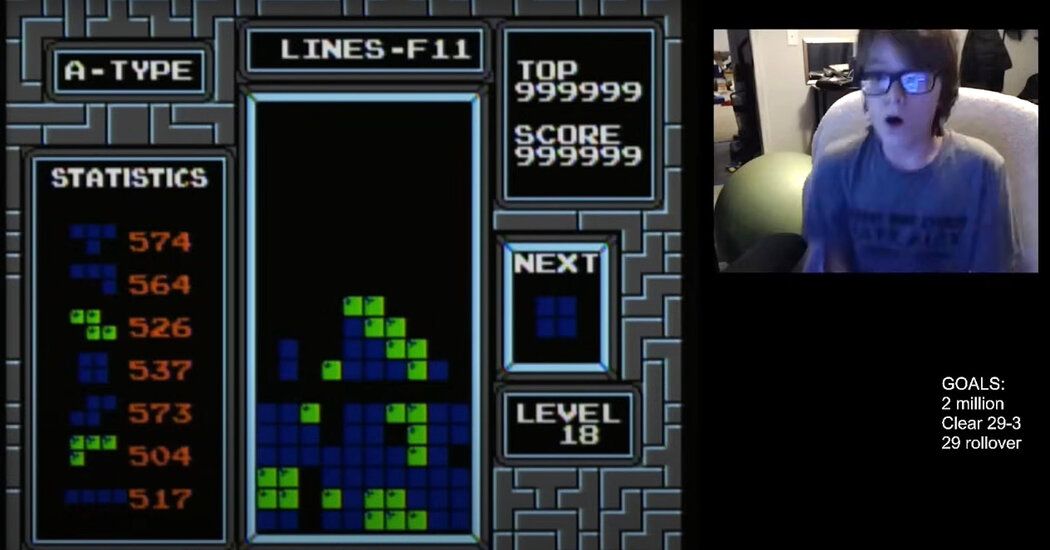Ms. Cox bought her son a version of a Nintendo console called RetroN, which used the same hardware as the original Nintendo console, at a pawn shop, as well as an old cathode ray tube television to help him get started. In a given week, Willis said, he plays about 20 hours of Tetris.
“Actually, I’m fine with that,” said Ms. Cox, a high school math teacher. “He does other things besides playing Tetris, so it really wasn’t that hard to say he was fine. It was harder to find an old CRT TV than it was to say, ‘Yeah, we can do this for a while.'”
For decades, players “beat” Tetris by hacking the game’s software. But Willis, who in the last year has become one of the best Tetris players in the country, is believed to be the first to do so on original hardware.
“It’s never been done by a human before,” said Vince Clemente, president of the Classic Tetris World Championship, adding, “It’s basically something that everyone thought was impossible until a couple of years ago.”
In the competitive world of Tetris, the goal is generally to outplay your opponents rather than outlast them. “Trying to avoid collapse” is a completely different approach. It is an act of survival.
“The main strategy is to play as safe as possible,” Willis said.
It’s a little more complicated than that, said David Macdonald, a video game content creator and competitive Tetris player known as aGameScout. In recent years, top players have begun using the “rolling technique,” a rapid tapping method that uses several fingers instead of just one or two. This innovation has changed what is possible in competitive Tetris. More and more top players are “going for the clash,” rather than simply racking up as many points as possible before being defeated by the game.












